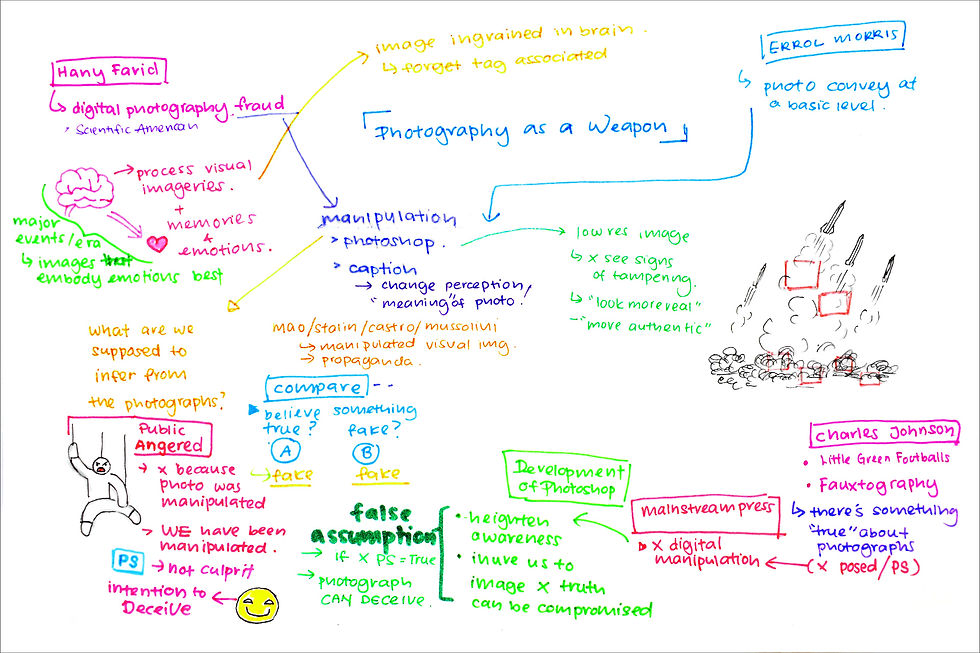Photography as a Weapon : Errol Morris
- Tan Sher Lynn

- Oct 13, 2019
- 2 min read
Updated: Nov 20, 2020
Photography have been used throughout history for documentation, identify an individual's identity, memento, as well as propaganda. The society perpetuate the idea that the camera is able to capture reality, hence the belief that photos tell the truth. Photo manipulation is not something new, Errol Morris discussed how photography can be used as a weapon that could alter reality by referencing the
doctored photograph of the four-missile launch by the Iranian government.
Photography is a powerful form of visual communication that is able to evoke emotions and feelings that shape viewers' appraisals of an event. Compared to words, images are much more vivid and compelling as visual thinking is deeply ingrained in the human brain. Dartmouth professor, Hany Farid stated, that mental processing of visual imagery is so powerful that people tend to forget the misinformation associated with an image over time while the initial information gotten from the photo stick in their minds. However, we should not overlook the power of words as humans tend to associate language with imagery. Captions, as Morris claimed, can change the gravity of how we perceive an image, giving new meaning to the image.
“You can lie and tell the truth,” — John Heartfield
Living in the era of saturated with images made us grew accustomed to verisimilar, but that does not mean we are always able to accurately identify the authenticity of these images especially with the development of image editing tools. Farid stated that it is even harder to determine signs of editing when the images are low resolution, especially with the is a belief that low quality image are more authentic. Charles Johnson, who manages the Little Green Footballs site that exposed the hoax, coined the term Fauxtography, referring to images that are manipulated to factually misrepresent a situation. Johnson, believe that photographic fraud should always be exposed as it could potentially influence someone else's worldview. Therefore, we should always doubt what we see, because in the end it is not about the photos have been manipulated, but us, the viewers.
Photomontage can be seen as one of the earliest form of photo manipulation. John Heartfield began juxtaposing photographic images during the first world war to criticize Nazi propaganda when he realized how photos can manipulate people. Many parodies of the Iranian missiles photos came out of "Iran: You Suck At Photoshop" a online competition sponsored by Boing Boing blog as a response to the scandal. The intention was not to ridicule but make us think. Morris reminded us that photography can not only replicate reality, but have the power to alter reality, they may warn us of impending dangers or ... can be a weapon that stirs up unwanted conflict.
Notes from the article
References
Morris, E. (2008) 'Photography as a Weapon', The New York Times, August 11. Available at: https://opinionator.blogs.nytimes.com/2008/08/11/photography-as-a-weapon/ (Accessed: 13 October 2019)
Kleon, A. (2008) 'THE POWER OF CAPTIONS: WORDS ADDED TO PICTURES', September 1. Available at: https://austinkleon.com/2008/09/01/the-power-of-captions-words-added-to-pictures/ (Accessed: 13 October 2019)
Savov, V. (2019) '‘Fauxtography’ is now a fact of life', The Verge, February 7. Available at: https://www.theverge.com/2019/2/7/18215051/fauxtography-photography-image-processing-editing-filters-reality (Accessed: 13 October 2019)










Comments